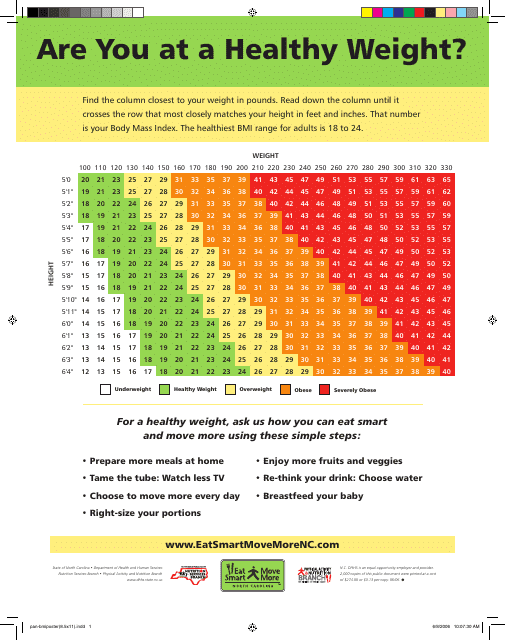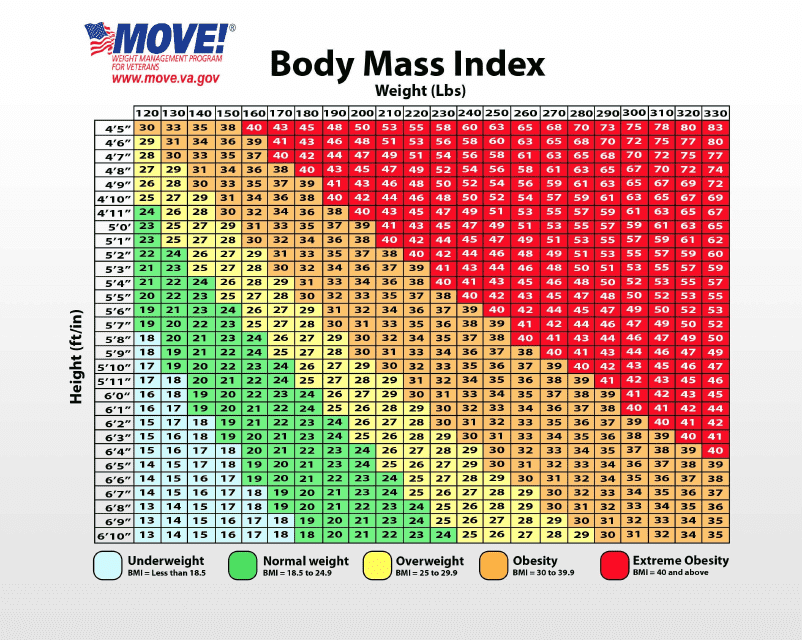Free Adult BMI Chart Templates
Adult BMI Chart: What Is It?
An individual may determine if they are at a normal weight in a variety of ways, not just by hopping on some scales. If they are an adult, they may want to determine their BMI which can be compared against an Adult BMI Chart. For children, a Child BMI Chart is best used as it is specific to the growth and development of children.
The measurement, which calculates the body fat composition in comparison to the height and weight of an individual, may be used by medical practitioners to categorize the weight of an individual. This information can help an individual understand if they need to decrease or eliminate specific health issues associated with weight, such as problems with diabetes and blood pressure, by determining if their weight is reasonable in proportion to their height.
It is rare to find an Adult Male BMI Chart and an Adult Female BMI Chart separately as most charts do not account for a difference in gender and use a standard BMI Chart for adults. However, this is beginning to change with some charts showing that men are permitted to have a slightly higher BMI ratio than women. Likewise, a BMI Chart for adults over 65 may have different requirements because fatty deposits increase with age due energy storage.
For a full list of Adult BMI Chart templates please feel free to check out our library below.
How to Read a BMI Chart for Adults?
Reading a BMI Chart for Adults is extremely simple once you have calculated the BMI itself. It is however important to understand that there are some limitations with such charts as they do not take into account important details that could influence the BMI such as the age of the individual, the disposition of the weight as well as muscle mass and medical conditions.
However, if we take a standard BMI Chart for adults, an individual will first need to determine their weight and height. Once this is done:
- A suitable chart needs to be found taking into account the age of the individual (whether they are a child, adult or elderly person) and where possible, the gender of the adult too;
- Once an appropriate chart has been found, the two measured components (the weight and height) need to be matched on the chart. On the top section of the chart the weight should be outlined. Find the weight measurement value and then find your height on the left side of the chart;
- Find where these two values meet on the chart and that should place you into one of five categories. These categories are also often color coded for simplicity;
- Any value that falls below 18.6 is classed as being underweight whilst the optimal weight should be above this value but less than 25;
- Above 25 but below 30 indicates that a person is overweight. Any values above 30 will indicate obesity with anything over 40 being classed as severely obese. This can cause serious and life-threatening complications.
Haven't found the template you're looking for? Take a look at the related templates below:
Documents:
4
This document provides a chart that helps adults determine their Body Mass Index (BMI) based on their height and weight. BMI is a measure of body fatness and can indicate whether a person is underweight, normal weight, overweight, or obese. Use this chart to assess your BMI and understand its implications for your health.
This BMI chart is used to calculate the Body Mass Index (BMI) for adults. It helps determine if a person's weight is within a healthy range based on their height.
This document provides a chart to help adults determine their Body Mass Index (BMI), which is a measurement of body fat based on height and weight. It helps individuals understand if their weight falls within a healthy range or if they are underweight, overweight, or obese.
This chart helps you track your body mass index (BMI) to determine if you are at a healthy weight.




